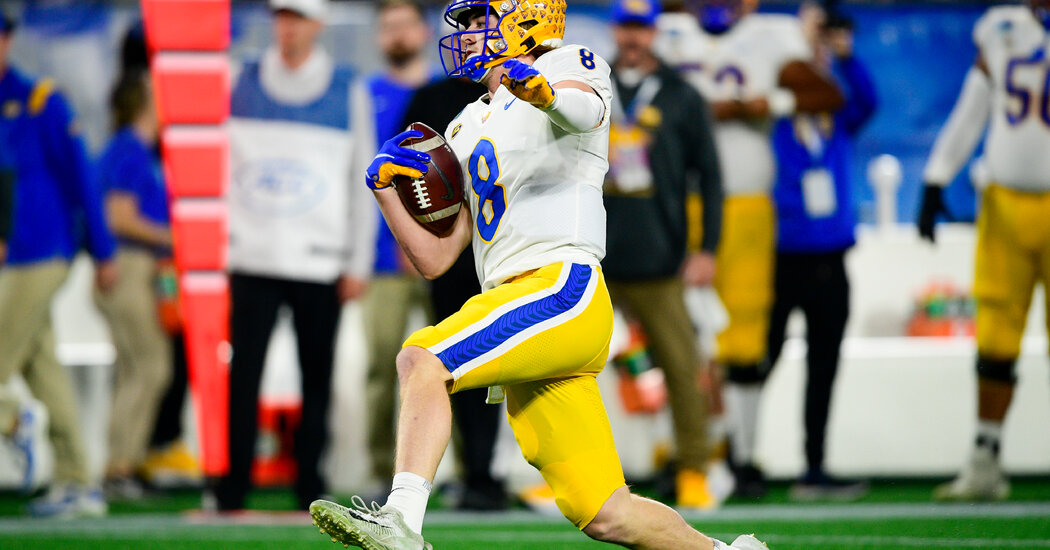
“The hope is that, in discussing this, this problem will go away,” Burks said. “It’s just a bad look for the game, and we hope that we can eliminate it without doing any more to the rules.”
But Shaw warned that if the problem persists, officials will “probably look toward an in-game solution next year.”
The blocking below the waist rule has been simplified.
The sport’s rule on blocking below the waist, intended to reduce the risk of leg injuries, had long been among the game’s most complex. It’s a lot easier to digest now — a change, officials said, rooted in a desire to simplify rules and to follow the insights they can glean from injury data and past adjustments.
“Simply put, for the circumstances where a player is allowed to block legally below the waist, the first requirement is that that player is stationary at the snap inside the tackle box,” said John McDaid, the SEC’s coordinator of football officials. “If you’re in motion, or you’re stationary outside of that tackle box, in no circumstances can you any longer block below the waist legally.”
Other changes will affect holding, targeting and time adjustments.
Some other rules have also been streamlined or modestly adjusted. Defensive holding, for example, will now carry an automatic first down. And instant replay officials will adjust the clock only for plays that happen during the last two minutes of a half.
The overarching targeting rule remains unchanged from last year, but the national coordinator of officials may now review second-half penalties that lead to a player’s disqualification for part of their next game. Under the rule, Shaw will be looking at whether a “clearly obvious” error was made in the targeting call. (There were 99 second-half targeting fouls in the Football Bowl Subdivision last season, according to the N.C.A.A.)
But the odds of a player dodging the lingering punishment are slim: Shaw, though reluctant to offer a forecast, predicted that “less than a handful” of suspensions will be overturned.